Instructional Series
This site will be closing soon as its content has moved to Tāhūrangi.
2024 titles are available on Tāhūrangi. Use the filters to find specific series.
Find Literacy resources at Tāhūrangi - Literacy.
Welcome to the English medium literacy instructional series teaching and learning resources for years 1 to 8.

- Gold
- Green
- Purple
- Blue
- Turquoise
- 4
- 3
- 2
- 1
- 7
- 5
- 6
- 4
- 8
- 3
- 1
- English
- Social Sciences
- Science
- Health and Physical Education
- Technology
- The Arts
- Mathematics and Statistics
- Non-fiction
- Fiction
- None
- Nature of science
- Living world
- Planet Earth and beyond
- Material world
- Nature of technology
- Physical world
- Geometry and Measurement
- Statistics
- Technological knowledge
- Use evidence
- Engage with science
- Critique evidence
- Gather and interpret data
- Articles
- Stories
- Poems
- Plays
Search results
153 items - Showing 101 - 110
-
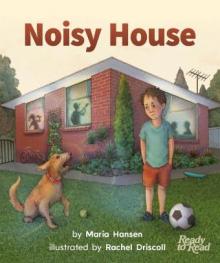
Noisy House
by Maria Hansen
illustrated by Rachel Driscoll
When Aunty Fay, Joe, Millie, and Buster the dog come to stay, Robbie’s quiet house becomes busy and noisy. At first, Robbie is not very happy about the changes, but after the visitors leave, he discovers his feelings have changed.
Blue 1
-
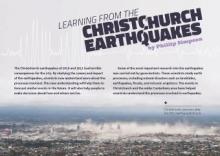
Learning from the Christchurch Earthquakes
by Phillip Simpson
New learning has come out of the devastation of the Christchurch earthquakes. How has the data and research from the earthquakes changed what geologists think?
-
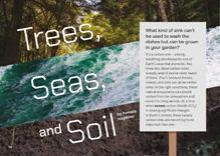
Trees, Seas, and Soil
This article examines how different processes combine to affect the balance of carbon in the atmosphere. It explains that the increased level of carbon dioxide in the atmosphere is having a huge effect on climate – an effect that can be reduced, as carbon is finite. Carbon sinks, in the form of forests, the ocean, and soils, could help to balance the carbon levels in the atmosphere. However, each form has its own complications. The article concludes that human use of fossil fuels needs to be reduced to protect the carbon sinks around us.
-
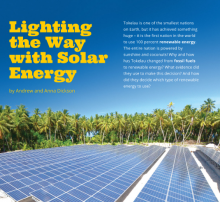
Lighting the Way with Solar Energy
by Andrew & Anna Dickson
When Tokelau decided to switch to renewable energy, they thought critically about all the options. They decided that solar energy was a cost-effective option suited to the sunny Tokelaun climate. Over four thousand solar panels were installed on Tokelau, making them the first country in the world to use 100 percent renewable energy. Now they hope to inspire others to make the switch.
-
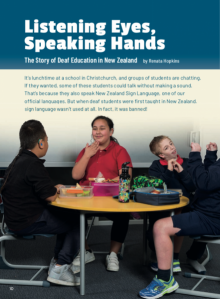
Listening Eyes, Speaking Hands: The Story of Deaf Education in New Zealand
by Renata Hopkins
This article explores how attitudes to deafness have changed over time. The article includes a social history of the van Asch Deaf Education centre, which opened in 1880.
-
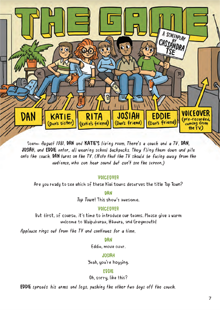
The Game
Screenplay by Cassandra Tse, illustrations by Toby Morris
An argument about which TV show to watch quickly turns into something else.
-
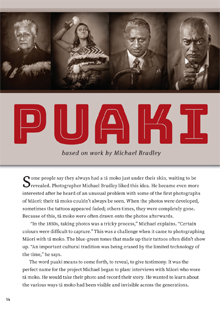
Puaki
based on work by Michael Bradley
Tā moko is the art and practice of traditional Māori tattoo, a taonga that almost disappeared as a result of colonisation. Puaki means “to come forth, to reveal, to give testimony”. Photographer Michael Bradley used this concept as the basis of a project exploring ways that tā moko has been both visible and invisible across the generations. In this article based on his project, four people explain why they proudly wear tā moko and how their facial moko connect the past with the present. The story is complemented by stunning portraits of each storyteller.
-
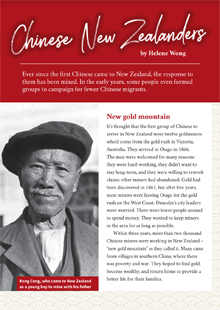
Chinese New Zealanders
by Helene Wong
"Chinese New Zealanders" provides an overview of migration to Aotearoa New Zealand from the 1860s until the present day. The article outlines push-and-pull factors that contributed to various waves of migration, how Pākehā New Zealanders responded to these waves, and adaptations made by Chinese migrants as they adjusted to their new home.
-
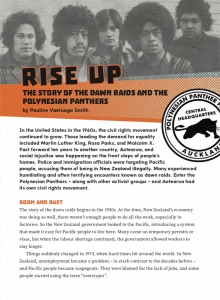
Rise Up: The Story of the Dawn Raids and the Polynesian Panthers
by Pauline Vaeluaga Smith
The article “Rise Up: The Story of the Dawn Raids and the Polynesian Panthers” recounts the story of the dawn raids that took place in Aotearoa in the 1970s. Under instruction from the government of the day, police and immigration officials invaded the homes of Polynesian people in the early hours of the morning, demanding evidence that they were lawfully living in Aotearoa.
-
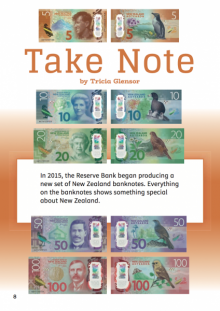
Take Note
by Tricia Glensor
This article provides information about the images on New Zealand banknotes, using the $5 note as an example. It provides opportunities for students to think critically about what makes the images special to New Zealanders.
Gold 1







 Literacy Online home
Literacy Online home
